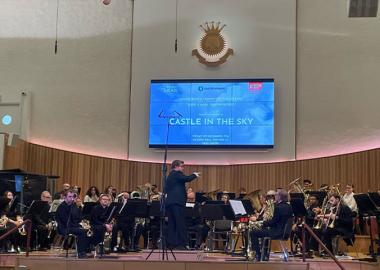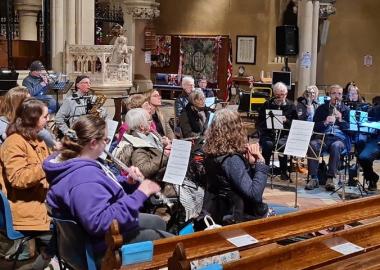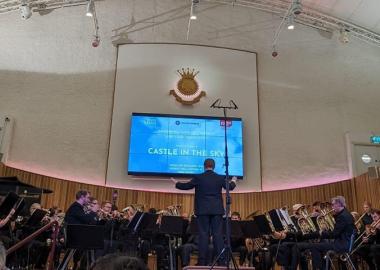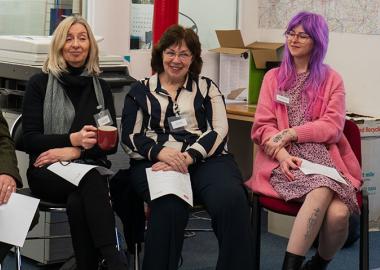
Whilst an alarm is sounding in the background the camera pans out to reveal several dead birds. 'Nobody warned them' he concludes, presumably the animals having succumbed to radioactive particles in the air. This chilling video was one of many stimuli for my site-specific work Against the Clock for the York Cold War Bunker.
York Cold War Bunker was one of 1,500 nuclear monitoring stations manned by volunteers during the cold war. Part-propaganda mission, part-warning and monitoring mechanism in the case of a nuclear attack, these stations were managed across the country from 1957 until the early nineties, with the York bunker being one of the headquarters. Later left abandoned it was acquired by English Heritage in 2006.
My brief was relatively straightforward: to create a work that would be performed four times over one evening which was easy to rehearse and play and could be performed for 40 minutes. My piece would be performed simultaneously alongside a classical trio, a jazz trio and a solo harmonica/saxophone in different rooms across the site. Audiences, of around 20, would be invited into the bunker on the hour and instructed to wander through the space, listen to the music and experience the unusual light installations by visual artist Steve Messam. My work was in the control room in which audiences looked over the players from above whilst they performed my ritualistic work. Ritualistic as it involved repetitive material that was constantly interrupted by the sound of an alarm clock that could occur at any moment.
Against the Clock is in four distinct sections with each of these sections split into a further three groups in which material is relatively similar. The first and final sections are designed to be mechanistic, repetitive and rather hypnotic; the second section, featuring various solos, is reflective and atmospheric and the third section features a melodic line shared throughout the ensemble. These different sections are representative of different emotions and states of the cold war bunker inspired by various videos (available on Youtube!) depicting the bunkers and explaining their existence. An alarm clock, controlled by the percussionist, sounded randomly instructing the players to stop and move onto the next section. Trying to be inventive with the space we also, every three iterations, had a distant last post-esque bugle call (played on various instruments) coming from a locked room.
As often is the way, I was terrified during the rehearsal process. The players, keen and committed, were doing a terrific job of playing the notes, and getting them correct, but it just did not work at the time. I had that horrible knot in my stomach that I’m sure fellow composers reading this will understand. Yet as soon as the performance in the space began my fears were allayed. With the atmospheric lighting, the ambulatory experience and the theatricality of the space the piece worked really well.
It was quite a difficult piece to grasp to be frank. I think many members of the audience didn’t particularly get it to begin with, but giving them the option of leaving and returning as they saw fit meant that caught different moments within the piece capturing different emotions of that particular space. One of the English Heritage curators at one point in the evening spent his whole hour in that control room with my piece and he commented on how both experiences of the music, fragmentary and listening to the whole, worked in very different ways.
It was a challenge to create a piece with so many parameters to consider, but I feel audiences, and performers, got a lot out of it, despite perhaps some confusion to start. What really excites me is the fact the piece only worked within the context of the space, making it truly site-specific. My next work with the group is for an Ironstone museum just outside of Middlesbrough. Watch this space…
Photo © Steve Messam 2015









